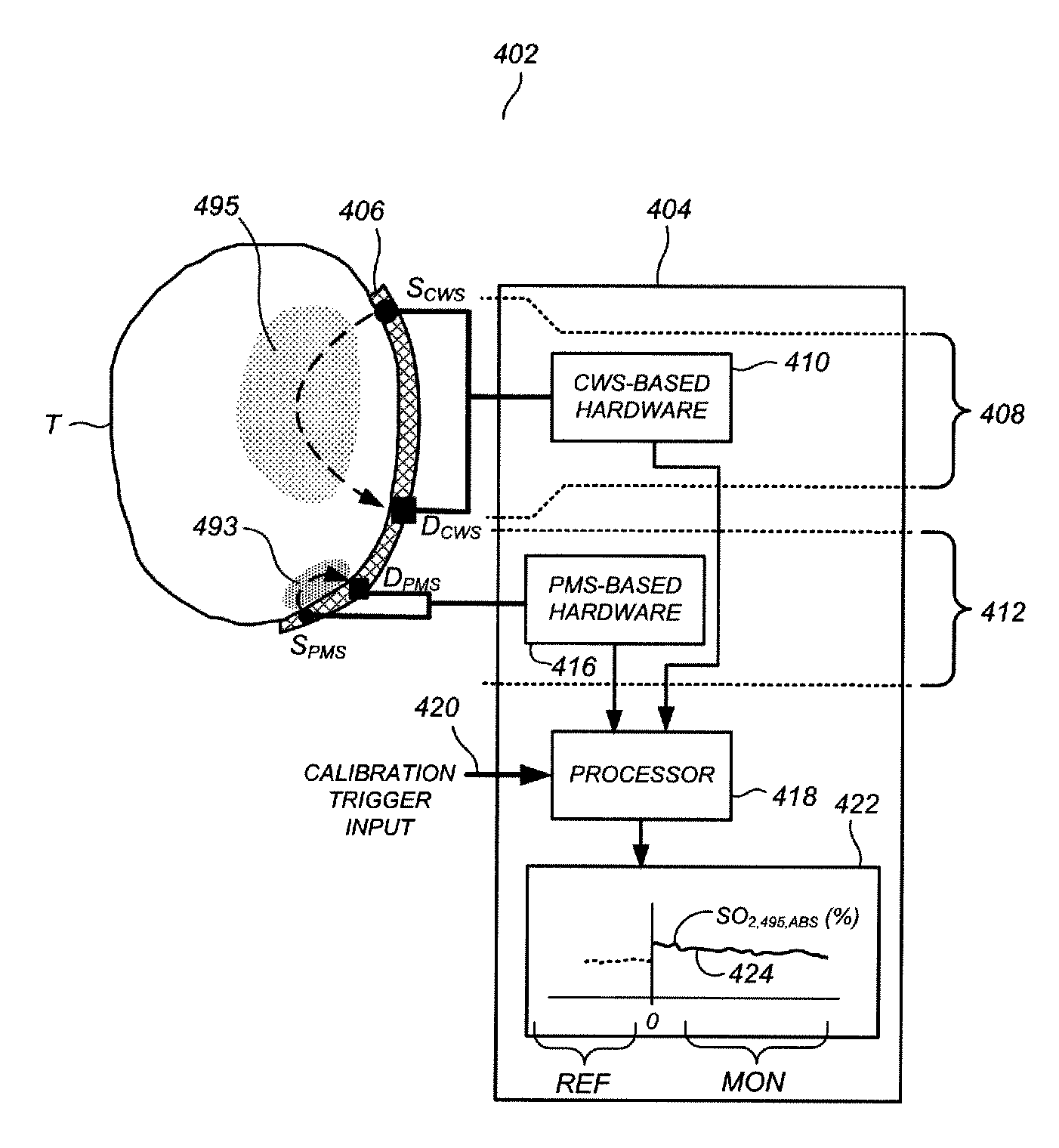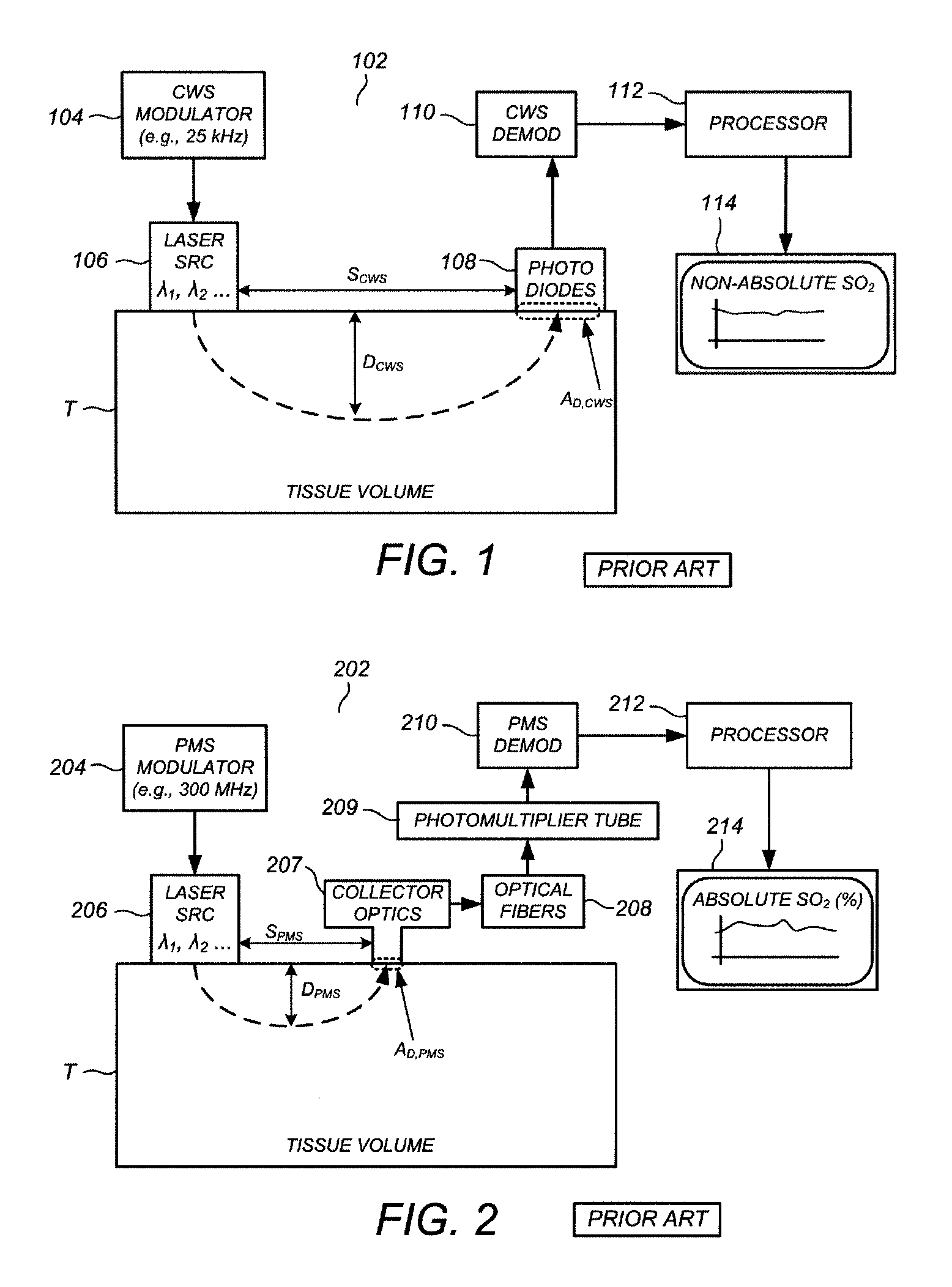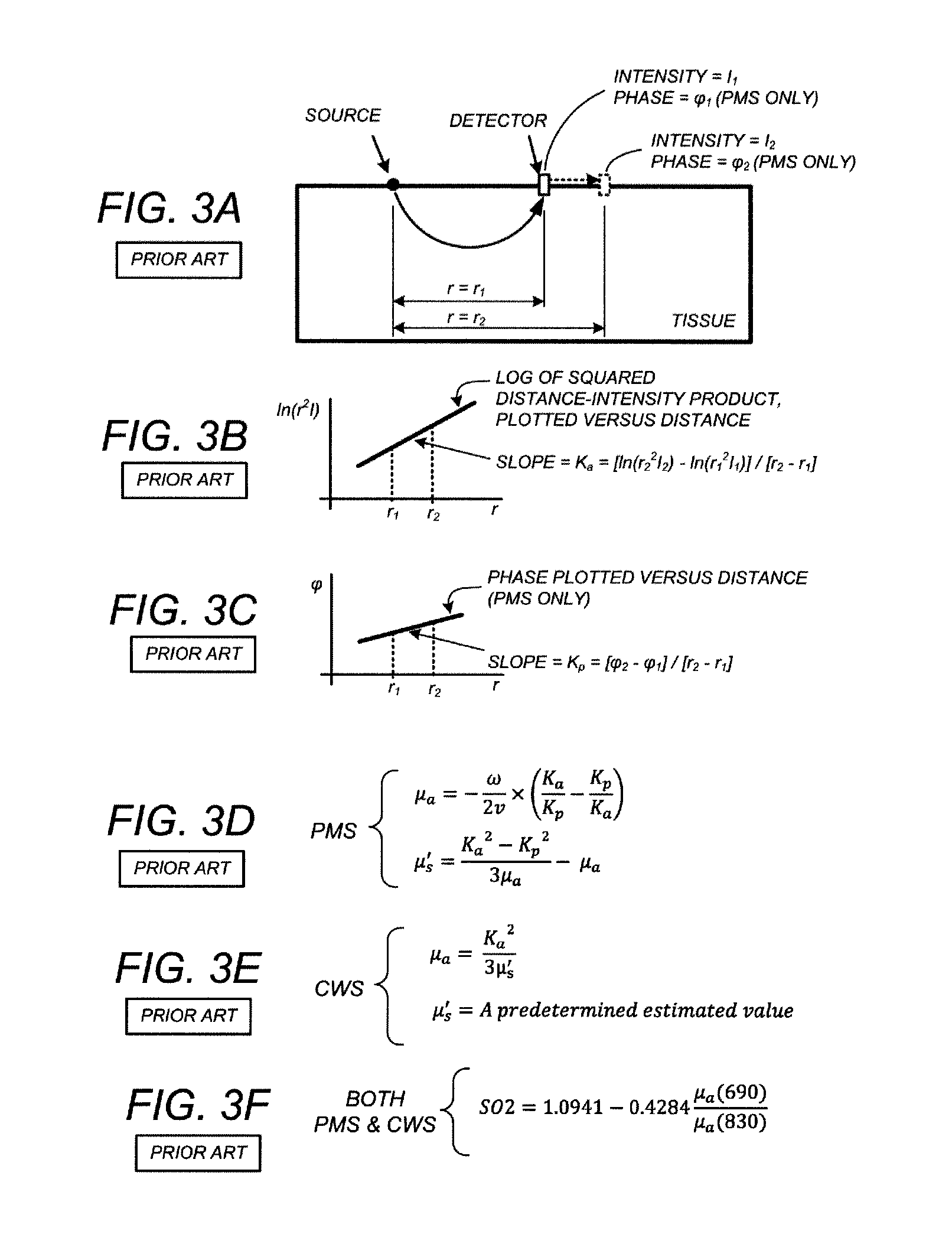Patient Monitoring Using Combination of Continuous Wave Spectrophotometry and Phase Modulation Spectrophotometry
a technology of phase modulation spectrophotometry and patient monitoring, which is applied in the field of patient monitoring using combination of continuous wave spectrophotometry and phase modulation spectrophotometry, can solve the problems of not providing a measure of oxygen levels in vital organs such as the brain, and the potential of insufficient oxygen delivery to the brain
- Summary
- Abstract
- Description
- Claims
- Application Information
AI Technical Summary
Benefits of technology
Problems solved by technology
Method used
Image
Examples
Embodiment Construction
[0032]Hybrid CWS-PMS cerebral oxygen saturation monitoring system using combined continuous wave spectrophotometry (CWS) and phase modulation spectrophotometry (PMS) according to one or more preferred embodiments is based at least in part on a finding that, for many practical clinical applications, it is sufficiently accurate and practical to assume that the SO2 levels throughout the brain are substantially uniform prior to the beginning of a surgical procedure, the ingestion of a drug, the application of an external stimulus, or more generally some event (termed herein a “subject medical event”) over the course of which SO2 monitoring will be desired. Thus, during a generally quiescent period subsequent to the mounting of the CWS and PMS hardware on the head of the patient but prior to the onset of the subject medical event, absolute SO2 readings from the PMS hardware, which are technically limited in applicability to relatively shallow brain regions near the PMS source-detector pa...
PUM
 Login to View More
Login to View More Abstract
Description
Claims
Application Information
 Login to View More
Login to View More - R&D
- Intellectual Property
- Life Sciences
- Materials
- Tech Scout
- Unparalleled Data Quality
- Higher Quality Content
- 60% Fewer Hallucinations
Browse by: Latest US Patents, China's latest patents, Technical Efficacy Thesaurus, Application Domain, Technology Topic, Popular Technical Reports.
© 2025 PatSnap. All rights reserved.Legal|Privacy policy|Modern Slavery Act Transparency Statement|Sitemap|About US| Contact US: help@patsnap.com



